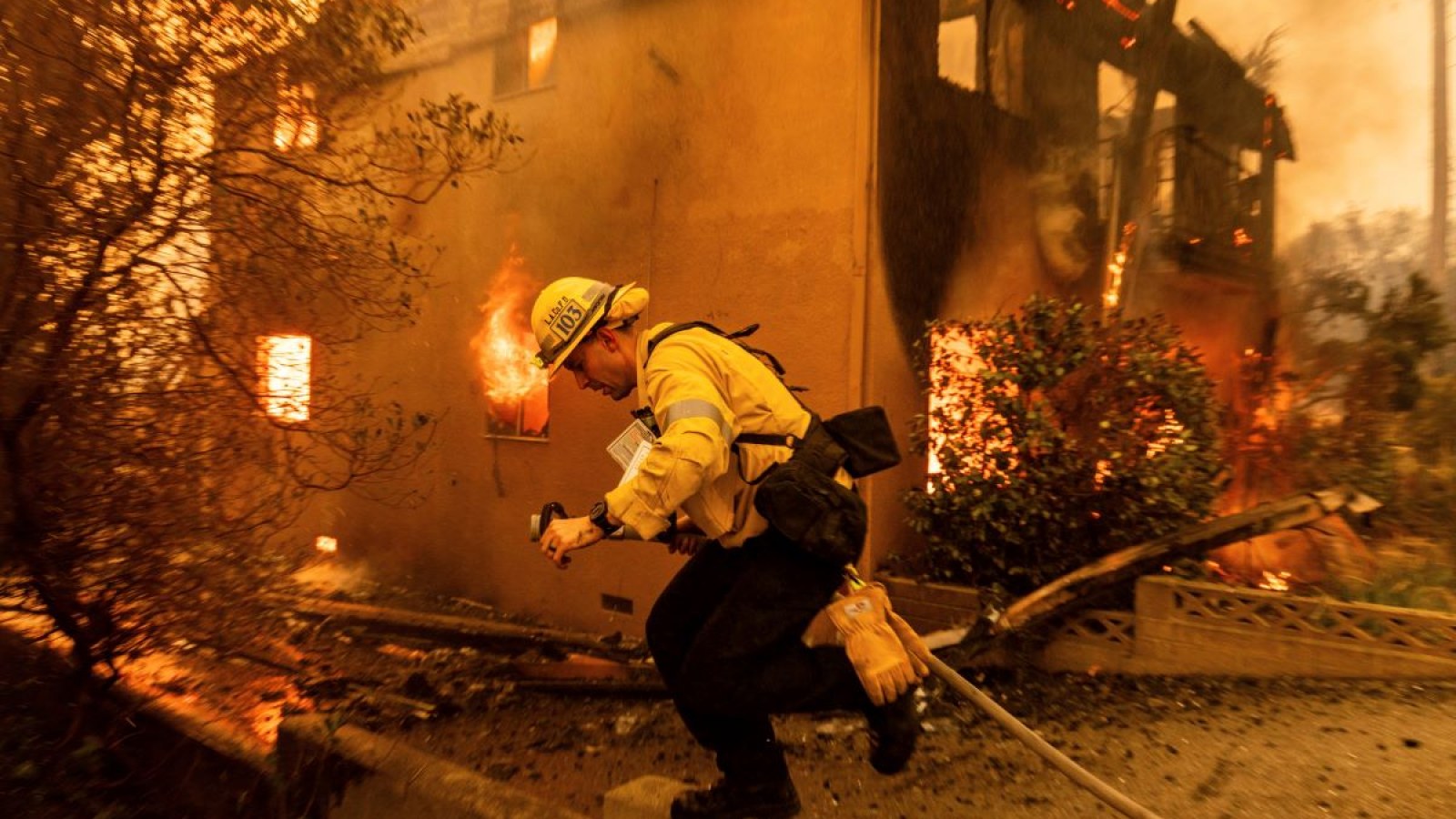
California has endured decades of drought, followed by two years of exceptionally heavy rainfall in 2022 and 2023. However, this wet spell was abruptly followed by an extremely dry autumn and winter in 2024, leaving behind vast swathes of tinder-dry grass and shrubs. According to a new study, climate change has intensified these whiplash conditions globally by 31-66% since the mid-20th century.
The wildfires have spread across several parts of the Los Angeles area, resulting in at least five fatalities, the destruction of hundreds of structures, and the displacement of more than 179,000 residents due to evacuation orders.
"This whiplash sequence in California has doubled fire risks," said Daniel Swain, lead author of the study from UCLA. "First, it significantly increases the growth of flammable grasses and brush in the months leading up to fire season, and then it dries them out to exceptionally high levels due to extreme heat and arid conditions that follow."
Researchers explain that a warming atmosphere holds and releases 7% more moisture per degree of temperature rise. This phenomenon, which they describe as an "expanding atmospheric sponge," exacerbates flooding when conditions are wet and extracts more moisture from plants and soil during dry periods, intensifying fire risks.
Experts emphasize that whiplash volatility is a crucial factor in driving both extreme flooding and wildfires. "The devastation caused by the current wildfires in LA highlights how rapid shifts in precipitation and evaporation can have severe impacts," said Sir Brian Hoskins, Chair of the Grantham Institute for Climate Change at Imperial College London.
He also pointed out that climate models may be underestimating these fluctuations. "Even conservative models predict a doubling of volatility with a global temperature rise of 3°C—an increasingly likely scenario."
The study adds to mounting evidence that climate change is altering the baseline conditions for wildfires. Much of the western United States, including California, experienced a prolonged drought that ended only two years ago. Since then, increased rainfall spurred the rapid growth of grasses, shrubs, and trees—perfect fuel for fires. However, the past summer brought record-high temperatures, followed by an exceptionally dry autumn and winter. Downtown Los Angeles has received just 0.16 inches of rain since October, falling more than four inches below the seasonal average.
Scientists argue that a warming planet is creating conditions that favor wildfires, such as lower relative humidity. These "fire weather" days—characterized by hot, dry, and windy conditions—are becoming more frequent worldwide, leading to longer and more severe fire seasons.
California's topography exacerbates the crisis. Fires burn more intensely and spread more rapidly in the region's steep terrain, while the area's naturally fire-prone shrubland provides ample fuel for fast-moving flames.
"Wildfires are a natural occurrence in this region, but California has experienced some of the most significant increases in fire weather season length and severity worldwide in recent decades, largely due to climate change," said Professor Stefan Doerr, Director of the Centre for Wildfire Research at Swansea University.
However, he cautioned that it is too soon to determine the precise extent to which climate change has intensified these particular fires. "A more detailed attribution analysis will be needed to assess the direct impact of global warming on these specific events."